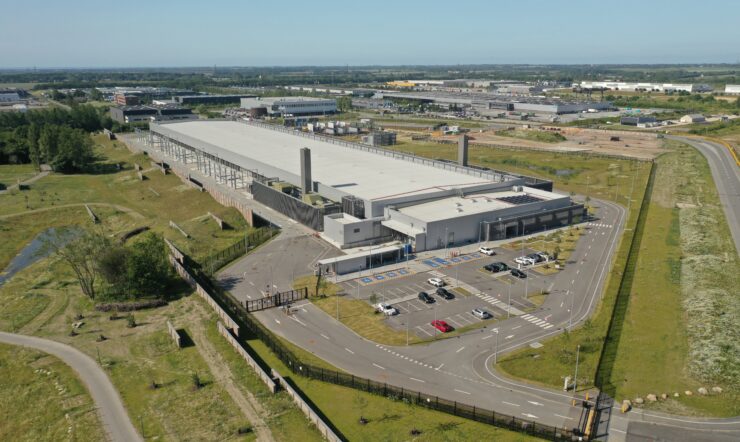Printing for the king was just the beginning for the 200-year-old Danish company Stibo. Fast forward to today, the Stibo Group is divided into three companies, Stibo Systems being one of them. With global brands such as Kellogg’s, Adidas, Glaxo Smith Kline, Colgate, Oatly, and PepsiCo on the client list, Stibo Systems is delivering Microsoft Azure-based master data management (MDM) in multiple domains to retailers, manufacturers, CPG businesses, and distributors all over the world.
The value of MDM is clear: Breaking down data silos and combining them into a shared, trusted platform enhances efficiency and performance and empowers businesses to keep up with the demand and make informed decisions. Not least because not just one, but several transformations are taking place right now. “One is that product data is evolving dramatically. The complexity is simply increasing with new formats such as videos and extended reality components. Another is the need to share product information with consumers, no matter if the purchase is taking place on the Adidas website or via a retailer in South Korea. Those two dimensions are dramatically transforming what we consider product master data,” says Adrian Carr, CEO of Stibo Systems.
 It’s good to know which products you’re selling. But if you know which products you’re selling to which customers through which channels, you have more analytics or zones of insights with power that can transform your business. That’s what the cloud provides you with.
It’s good to know which products you’re selling. But if you know which products you’re selling to which customers through which channels, you have more analytics or zones of insights with power that can transform your business. That’s what the cloud provides you with.
– Adrian Carr, CEO, Stibo Systems.
A business with a conscience
“Stibo Systems is owned by a foundation – and that means we’re not solely driven by profit but really focused on doing the right thing – we are a business with a conscience,” Carr says. “Our tagline says, better data, better business, better world, and that’s because our mission is to help companies improve data that helps improve decision-making and doing better business — within the context of leaving the world a better place than we found it.”
What is master data management?
Just because data lies in a database doesn’t necessarily make the data true. Master data management is about using technology and processes to ensure that all data within the database is indeed true and can be trusted. “Imagine all the time we spend looking at data in a spreadsheet and asking ourselves, where does this data come from – what’s the provenance, is this even right? We take that debate out of the decision-making process because within our system we create domains of data, that can be trusted, reused, and shared across the supply chain,” Carr says before telling the story about GlaxoSmithKline that recently broke off part of their business. “One of the GSK spin-offs is a very large company called Haleon and as they set up this new business entity, they wanted to have a solid foundation and define the new business from scratch. That requires access to critical data components that are mastered and trustworthy. And that’s what we help Haleon achieve.”
It’s not strange that many of the world’s largest brands choose to work closely with Stibo Systems. “We’re the best in the world to manage product data. But that’s just one group of data,” says Carr. “Another domain of data is about the customers. Who are they, and what are their billing and shipping addresses – and yet another domain is about our suppliers, our employees, and our locations. All parts of the business depend on these domains of data, and we’re proud to say we are also the strongest on multidomain.”
 One of the benefits of MDM is deleting the 20 minutes in every hour that management teams spend debating the provenance of the data. The end result is agility, and for business agility, you need data agility.
One of the benefits of MDM is deleting the 20 minutes in every hour that management teams spend debating the provenance of the data. The end result is agility, and for business agility, you need data agility.
– Adrian Carr, CEO, Stibo Systems.
Taking the risk away from the customers
According to Carr, SaaS is all about taking the risk away from the customers and bringing it back to where it belongs: the vendors. “We launched on another cloud vendor’s platform and then pivoted over to Microsoft Azure because it was simply better suited for us and the needs of our customers. We have now moved 500 customers to Azure – others are still in line, but we are well on our way. It might have taken longer than I anticipated, but not because of the technology. The organizational changes and the shift in culture and behavior have simply been vaster than anticipated. But it’s the third time we have re-platformed, so we’re not frightened, and we know how to do it,” Carr says. “Now there are simply things we don’t need to worry about; Microsoft Azure is stable and scalable. Many of our customers are both very big and global and the expertise we’re now getting through Azure is helping both us and our customers evolve.”
The benefits, Carr explains, typically come from a range of process improvements and efficiency gains across the supply chain. “An example: imagine you’re a retailer with thousands of suppliers and one of them changes their product slightly – onboarding that new product information into the system is now much easier, and that’s where you get the efficiency gains,” Carr says.
Carr stresses the importance of a good and trustful collaboration with Microsoft. “Microsoft is our most strategic and biggest supplier. Actually, we hadn’t taken a programmatic view of the cloud before we engaged with Microsoft. The team from Microsoft did a fantastic job helping us lay out a passage of usage, and the whole process has been good. They have shared their skills with us, and we have felt safe – like a big sister watching over you when you’re breaking new ground and going through a major transition. That’s really comforting,” Carr says before concluding: “And we are really proud of being a managed ISV at Microsoft. This engagement supports our go-to-market execution, and we can combine our activities. It’s simply a win-win situation.”





 It’s good to know which products you’re selling. But if you know which products you’re selling to which customers through which channels, you have more analytics or zones of insights with power that can transform your business. That’s what the cloud provides you with.
It’s good to know which products you’re selling. But if you know which products you’re selling to which customers through which channels, you have more analytics or zones of insights with power that can transform your business. That’s what the cloud provides you with.





















